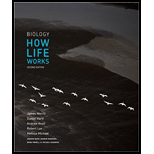
Concept explainers
To determine:
The time taken by the human population to double from 1 billion to 2 billion, from 2 billion to 4 billion and determine the conclusion that can be drawn from the rate of population growth.
Concept introduction:
Population growth is the rate at which the population grows. It is the speed with which the number of people of a defined location increases. Many factors influence the population growth such as the rate at which people are born, the rate at which people die and the rate at which people emigrate or immigrate from one location to another.
Explanation of Solution
With reference to the fig. 49.1 of chapter 49, the time taken to double the population from 1 billion to 2 billion, it took 130 years. That means the rate of population growth was fairly slow. This can be attributed to lack of treatments and vaccines towards various diseases that balanced the rate of births and deaths.
The time taken to double the population from 2 billion to 4 billion, it only took 45 years, which means that the rate of population growth was very rapid than the previous years. This can be attributed to the development in the field of science that helped to achieve relatively low death rates that led to population boom.
The pattern depicted in the graph of fig. 49.1 tells that the rate at which the population grew had increased gradually with time.
The rate of population growth has increased rapidly from the years 1930 to 1975, whereas from the year 1800 to 1930 the
Want to see more full solutions like this?
Chapter 49 Solutions
Biology: How Life Works - Standalone book
 Human Anatomy & Physiology (11th Edition)BiologyISBN:9780134580999Author:Elaine N. Marieb, Katja N. HoehnPublisher:PEARSON
Human Anatomy & Physiology (11th Edition)BiologyISBN:9780134580999Author:Elaine N. Marieb, Katja N. HoehnPublisher:PEARSON Biology 2eBiologyISBN:9781947172517Author:Matthew Douglas, Jung Choi, Mary Ann ClarkPublisher:OpenStax
Biology 2eBiologyISBN:9781947172517Author:Matthew Douglas, Jung Choi, Mary Ann ClarkPublisher:OpenStax Anatomy & PhysiologyBiologyISBN:9781259398629Author:McKinley, Michael P., O'loughlin, Valerie Dean, Bidle, Theresa StouterPublisher:Mcgraw Hill Education,
Anatomy & PhysiologyBiologyISBN:9781259398629Author:McKinley, Michael P., O'loughlin, Valerie Dean, Bidle, Theresa StouterPublisher:Mcgraw Hill Education, Molecular Biology of the Cell (Sixth Edition)BiologyISBN:9780815344322Author:Bruce Alberts, Alexander D. Johnson, Julian Lewis, David Morgan, Martin Raff, Keith Roberts, Peter WalterPublisher:W. W. Norton & Company
Molecular Biology of the Cell (Sixth Edition)BiologyISBN:9780815344322Author:Bruce Alberts, Alexander D. Johnson, Julian Lewis, David Morgan, Martin Raff, Keith Roberts, Peter WalterPublisher:W. W. Norton & Company Laboratory Manual For Human Anatomy & PhysiologyBiologyISBN:9781260159363Author:Martin, Terry R., Prentice-craver, CynthiaPublisher:McGraw-Hill Publishing Co.
Laboratory Manual For Human Anatomy & PhysiologyBiologyISBN:9781260159363Author:Martin, Terry R., Prentice-craver, CynthiaPublisher:McGraw-Hill Publishing Co. Inquiry Into Life (16th Edition)BiologyISBN:9781260231700Author:Sylvia S. Mader, Michael WindelspechtPublisher:McGraw Hill Education
Inquiry Into Life (16th Edition)BiologyISBN:9781260231700Author:Sylvia S. Mader, Michael WindelspechtPublisher:McGraw Hill Education





